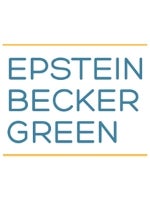On March 29, 2022, the U.S. House of Representatives passed H.R. 2954, entitled “Securing a Strong Retirement Act” (“Secure 2.0”), which would, among other things, impose additional requirements on employers that sponsor 401(k) and 403(b) plans. Secure 2.0 has not yet been passed by the Senate, and is likely to undergo changes, if passed by the Senate. Nevertheless, the following overview of some of the provisions included in the House version of Secure 2.0 provides a preview of the types of changes that retirement plans sponsors may be required (or permitted) to implement, as early as this year or in 2023:
-
401(k) and 403(b) plans will be required to automatically enroll employees when they become eligible. The initial automatic enrollment amount is at least 3%, but no more than 10%. Each year that amount will increase by 1% until it reaches 10%. Employees will be permitted to opt out of coverage and all current 401(k) and 403(b) plans will be grandfathered.
-
The age for beginning required minimum distributions will gradually increase to 75. Under current law, participants are generally required to begin taking distributions from their retirement plans at age 72. Secure 2.0 increases the required minimum distribution age to 73 starting on January 1, 2023, then to age 74 starting on January 1, 2030, and finally to age 75 starting on January 1, 2033.
-
Higher limits on catch-up contributions will apply at ages 62, 63 and 64. Under current law, employees who have attained age 50 are permitted to make catch-up contributions. The limit on catch-up contributions, which currently is $6,500, will increase to $10,000 (as indexed), for employees who have attained ages 62, 63 and 64.
-
The service requirement for long-term, part-time employees to participate in their employers’ 401(k) plans will be reduced. Currently, a plan may require an employee to complete either a one year of service requirement (with the 1,000-hour rule) or 3 consecutive years with the employer of at least 500 hours of service. Secure 2.0 reduces the three-year rule to two years.
-
An employer will be permitted to make matching contributions on “qualified student loan payments.” Qualified student loan payments are broadly defined as any indebtedness incurred by the employee solely to pay qualified higher education expenses of the employee. For purposes of the nondiscrimination test applicable to elective contributions, a plan may test separately the employees who receive matching contributions on student loan repayments.
Given the overwhelming support for Secure 2.0 (414-5 approval vote in the House) and favorable support in the Senate, plan sponsors should closely monitor the status of Secure 2.0. Depending on the schedule for review by the Senate and the final effective dates for the provisions in Secure 2.0, if Secure 2.0 is passed, plan sponsors may need to act as early as later this year.




 />i
/>i

